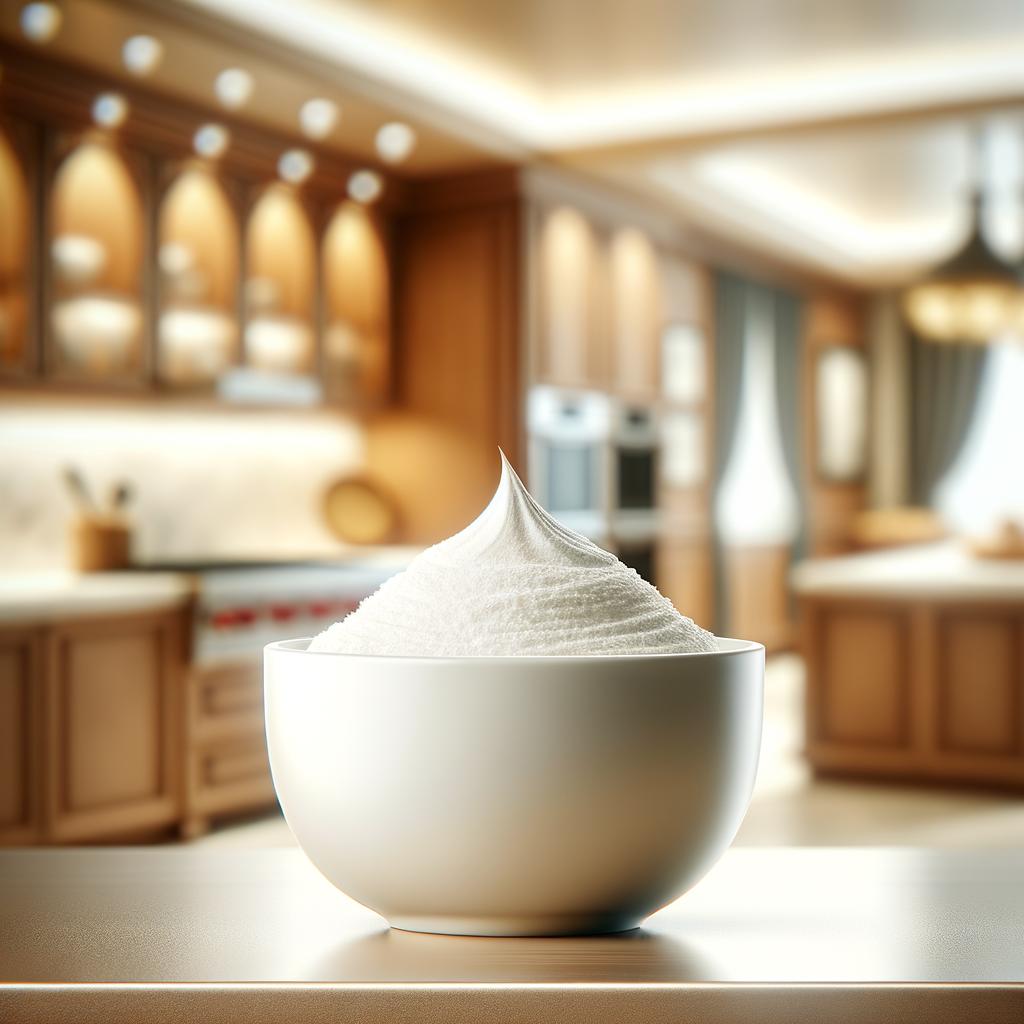Cream of Tartar

Description
Cream of tartar, scientifically known as potassium bitartrate, is a fascinating ingredient that often sits quietly in the back of our pantry. It's a white, powdery substance with a texture similar to baking powder or baking soda. It's odorless and has a unique, slightly acidic taste that's often described as a subtle mix of sweet and sour. Cream of tartar is a by-product of winemaking, derived from the tartaric acid found in grape skins. It is this connection to the world of wine that gives cream of tartar its unique and romantic charm.
Primary Uses
Cream of tartar is an unsung hero in the culinary world. It's often used in baking, particularly in recipes that require egg whites such as meringues and angel food cake. The cream of tartar stabilizes the egg whites, allowing them to maintain their volume and texture. It's also a key component in making play dough and is used in some traditional cleaning recipes due to its acidic properties. Its non-culinary uses extend to the medicinal realm, where it's been used as a home remedy for treating urinary tract infections, although this use is not scientifically proven.
History
The history of cream of tartar is as rich and varied as the wines from which it originates. It dates back to ancient times, with evidence of its use in the winemaking process found in Greek amphoras. Its culinary use, however, didn't become widespread until the 19th century when it was discovered to have leavening abilities when combined with baking soda. This discovery marked the birth of modern baking powder, a blend of cream of tartar, baking soda, and cornstarch. Over time, cream of tartar has maintained its quiet yet vital role in our kitchens, making our baked goods light and fluffy, and adding a certain je ne sais quoi to our culinary creations.
Nutritional Information
Though not typically consumed in large quantities, cream of tartar is a source of potassium. It also contains small amounts of calcium and magnesium. It's low in fat, protein, and carbohydrates, making it a negligible contributor to daily nutritional needs when used in cooking. However, its true value lies not in its nutritional content, but in its ability to transform and elevate other ingredients. Compared to similar stabilizing agents, like lemon juice or white vinegar, cream of tartar offers a more neutral flavor, allowing the other ingredients to shine. It's a testament to the beautiful subtlety of the culinary arts, where even the smallest of ingredients can have a profound impact.

